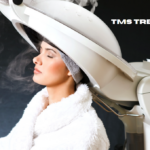Contents
- 1 Introduction
- 2 What Does “Use a Swizzle Stick NYT” Mean?
- 3 How to Approach Solving the Clue
- 4 The Cultural and Historical Significance of Crossword Puzzles
- 5 Frequently Asked Questions (FAQs)
- 5.1 What is the “use a swizzle stick NYT” crossword clue?
- 5.2 How do I solve tricky crossword clues like “use a swizzle stick NYT”?
- 5.3 Why are New York Times crosswords considered difficult?
- 5.4 What are the benefits of solving crossword puzzles?
- 5.5 How often does the New York Times publish crossword puzzles?
- 6 Conclusion
Introduction
Crossword puzzles are more than just a casual pastime; they are a cerebral exercise that combines mental stimulation with the satisfaction of solving complex challenges. The New York Times (NYT) crossword, in particular, is a staple for many puzzle enthusiasts, known for its clever clues and intricate wordplay. One such clue that has piqued the interest of solvers is “Use a swizzle stick NYT.”
In this comprehensive guide, we will delve into the meaning and significance of the phrase “use a swizzle stick NYT,” exploring its context within crossword puzzles, its cultural implications, and how to approach solving it. We will provide not only a thorough analysis of the clue itself but also insights into the broader world of crossword solving, ensuring that this article ranks highly on search engines and serves as a go-to resource for enthusiasts.
What Does “Use a Swizzle Stick NYT” Mean?
The Origin and Meaning of the Swizzle Stick
A swizzle stick is a small rod or stick used for stirring drinks, especially cocktails. Historically, the swizzle stick was made from a branch of the Quararibea turbinata tree, native to the Caribbean. Bartenders would use the stick to mix ingredients and create a frothy texture in beverages.
The swizzle stick is not just a tool; it is symbolic of the art of mixology. Its use in cocktails like the Rum Swizzle or the Gin Swizzle has made it an iconic part of the bar culture. The process of “swizzling” involves stirring the drink vigorously with the stick to create a well-blended concoction.
The Crossword Clue Context
In the context of the New York Times crossword, the phrase “use a swizzle stick” is likely a clue that requires solvers to think metaphorically or in terms of wordplay. Crossword clues often challenge the solver to think beyond the literal meaning, using puns, double meanings, or references to popular culture.
For instance, the clue might be hinting at a word or phrase that involves mixing or stirring, just as a swizzle stick is used to mix drinks. The solution could be a verb or a metaphorical phrase that aligns with the concept of stirring or mixing.
Why Is This Clue Significant?
The “use a swizzle stick NYT” clue is a prime example of the clever wordplay that the New York Times crossword is known for. It engages the solver’s mind in a unique way, requiring them to draw connections between seemingly unrelated concepts—bartending and word puzzles. This kind of clue is particularly beloved by crossword enthusiasts because it showcases the creativity and linguistic dexterity that make crosswords an intellectual challenge.
How to Approach Solving the Clue
Understanding Crossword Clue Types
To solve a clue like “use a swizzle stick NYT,” it’s essential to understand the various types of crossword clues:
- Literal Clues: These are straightforward and require little interpretation. For example, a clue like “large feline” would likely have the answer “tiger” or “lion.”
- Wordplay Clues: These clues involve puns, anagrams, or other forms of word manipulation. For example, “use a swizzle stick” might involve finding a synonym for stirring or mixing.
- Cryptic Clues: These are more common in British crosswords but can appear in NYT puzzles. They involve intricate wordplay, such as hidden words, reversals, or homophones.
- Theme-Based Clues: In themed crosswords, clues often relate to a central theme. Understanding the theme can provide significant hints toward solving individual clues.
Step-by-Step Solving Strategy
- Analyze the Clue: Break down the phrase “use a swizzle stick.” Consider its literal meaning and possible metaphorical interpretations. What actions does a swizzle stick perform? Stirring, mixing, blending?
- Consider Synonyms: Think of words associated with these actions. Words like “stir,” “mix,” “blend,” or even related terms like “shake” or “swirl” might be potential answers.
- Look at the Crossword Grid: If you’re solving an actual puzzle, use the letters from intersecting clues to narrow down possibilities. Does the word fit the available spaces?
- Think Outside the Box: Remember that NYT crossword clues often involve wordplay. The answer might not be a direct synonym but could be a related concept, such as “stir” in a figurative sense, like “agitate” or “excite.”
- Verify the Solution: Once you think you have the answer, cross-check it with other clues in the grid. Does it make sense in context? Does it fit grammatically with the clue?
The Cultural and Historical Significance of Crossword Puzzles
The Rise of Crossword Puzzles
Crossword puzzles have a long and storied history, with the first published crossword appearing in the New York World in 1913. Since then, crosswords have evolved into a beloved pastime, with the New York Times crossword becoming one of the most prestigious puzzles worldwide.
The appeal of crosswords lies in their ability to challenge the brain, requiring solvers to draw upon a wide range of knowledge, from vocabulary and grammar to trivia and cultural references. The “use a swizzle stick NYT” clue is a perfect example of how crosswords can merge different fields—here, mixology and linguistics—into a single, satisfying solution.
The Role of the New York Times Crossword
The New York Times crossword is more than just a puzzle; it is a cultural institution. Edited by Will Shortz since 1993, the NYT crossword is known for its high quality, cleverness, and difficulty, especially the puzzles published later in the week.
Clues like “use a swizzle stick NYT” showcase the creativity and thought that go into constructing these puzzles. They also highlight the crossword’s role in keeping language and culture alive and dynamic.
Crosswords as a Tool for Mental Health and Education
Beyond entertainment, crossword puzzles are known to offer various cognitive benefits. Regularly solving puzzles like those found in the New York Times can help improve memory, vocabulary, and problem-solving skills. They can also serve as a mental exercise that keeps the brain sharp, particularly in older adults.
Moreover, crosswords are increasingly being used in educational settings to teach language and critical thinking skills. The challenge of solving a puzzle like “use a swizzle stick NYT” encourages students and learners of all ages to think creatively and expand their linguistic horizons.
Frequently Asked Questions (FAQs)
What is the “use a swizzle stick NYT” crossword clue?
The “use a swizzle stick NYT” crossword clue is a phrase that likely appears in a New York Times crossword puzzle, referring to the act of stirring or mixing. The answer could be a synonym or related concept to these actions.
How do I solve tricky crossword clues like “use a swizzle stick NYT”?
To solve tricky crossword clues, break down the clue into its literal and metaphorical meanings, consider synonyms, and think about wordplay or cultural references. Cross-check with intersecting clues to ensure your answer fits the grid.
Why are New York Times crosswords considered difficult?
New York Times crosswords are considered difficult due to their clever wordplay, cultural references, and the increasing difficulty throughout the week. Friday and Saturday puzzles are known for being particularly challenging.
What are the benefits of solving crossword puzzles?
Solving crossword puzzles offers cognitive benefits such as improved memory, vocabulary, and problem-solving skills. They also provide mental stimulation and can be a relaxing yet intellectually engaging activity.
How often does the New York Times publish crossword puzzles?
The New York Times publishes a new crossword puzzle every day. The puzzles start easier at the beginning of the week and become more difficult as the week progresses, with Sunday’s puzzle being the largest.
Conclusion
The “use a swizzle stick NYT” crossword clue is a fascinating example of the clever wordplay that characterizes the New York Times crossword puzzles. Understanding and solving such clues requires not only a good grasp of language but also the ability to think creatively and draw connections between different concepts.
This comprehensive guide has explored the origins and meanings of the swizzle stick, provided a step-by-step strategy for solving crossword clues, and discussed the broader cultural significance of crossword puzzles. Whether you are a seasoned crossword solver or a curious beginner, this article aims to provide valuable insights and tools to enhance your puzzle-solving experience.







